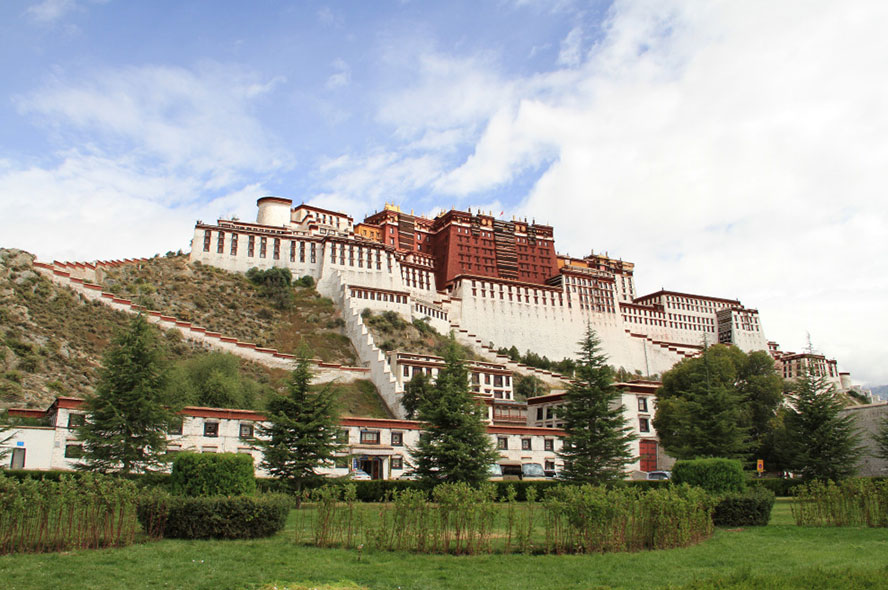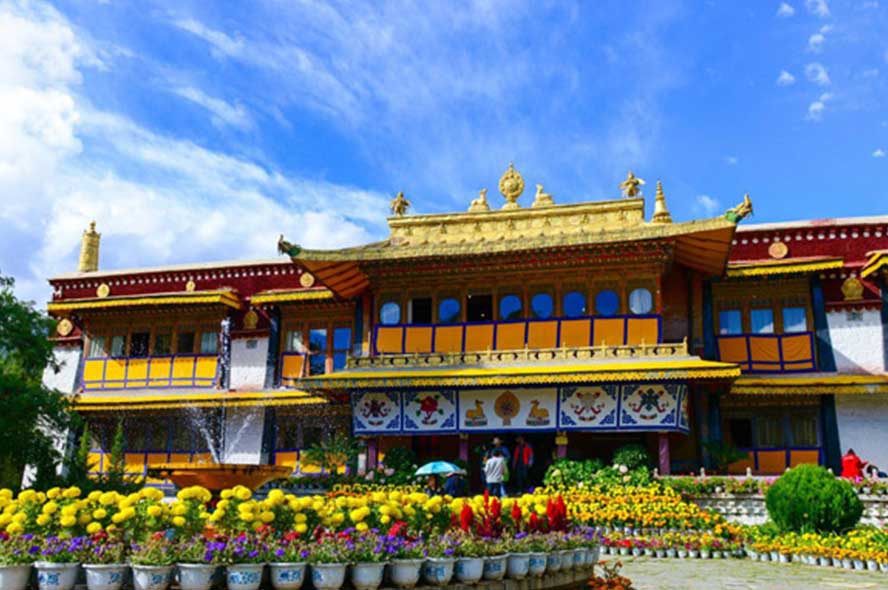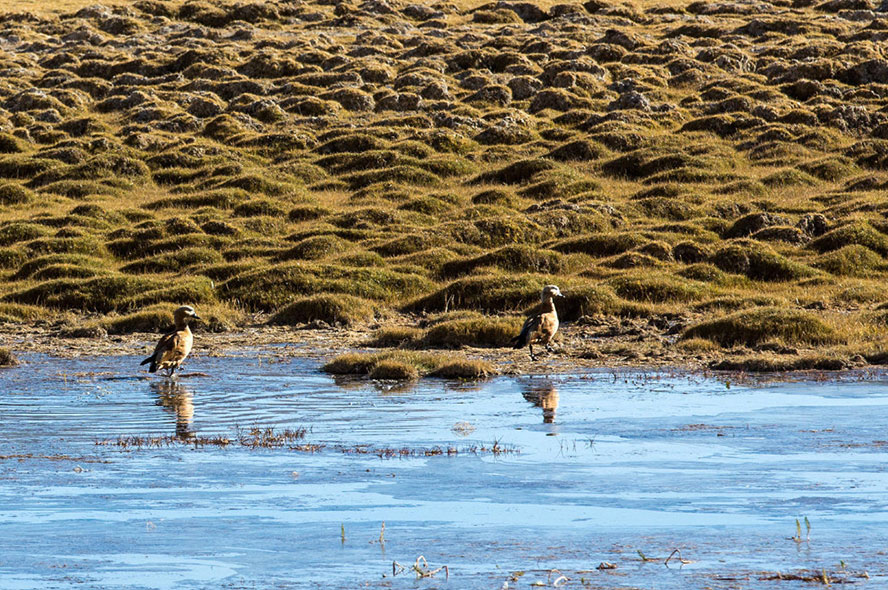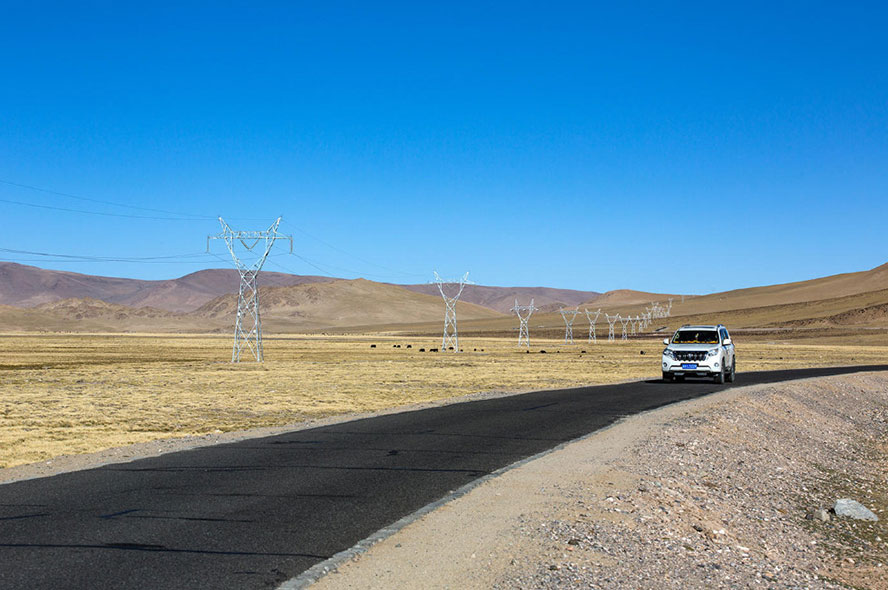You will get to know that Tibet is with good geographical advantage after you view the map of Tibet, which is bounded by such significant regions as Central China, India, Bhutan and Nepal. Recently all these areas have gained popularity rapidly from not only Asian descendants, but also from many young and western travelers who are seeking adventure in a foreign land or those who are on a spiritual journey in hope of looking to immerse themselves in the eastern world which is full of its ancient religions, myths and philosophies.
And since all this richness lies in these surrounding areas, why shall we choose to visit Tibet instead. What kind of attractions does Tibet possess alone?
Geographical Features
There are innumerable factors that contribute to make Tibet a special place. Among all the factors, the unparalleled and utterly unique geography is one of the factors that attract us.
So what is the characteristic that attracts us. The point lies in its incredible variety, from the high-altitude peaks to the subterranean valleys, also includes the Land forms exist between them. The majority of the land is composed by Tibetan Plateau,a very high altitude steppe—or if you prefer, grasslands, which is rich in impressive mountainous regions and bodies of water.
Tibet has the division of two dominant regions, northwestern lake region and the southeastern river region. And because the climate differs a lot in different parts of the region, some areas are in fertile and robust ecosystems while others are in a more deserted condition.
You may wonder what this matters for you. For a traveler, the most thrilling thing is that the places you visit brings you a completely fresh experience and sensation. The key point is that you shall know what this means for you. If you live in flat lands like the Maldives, or Everglades Florida, it will be thrilling for you to visit the resorts with mountaintops or deep ravines. If you live in the place with snow-capped peaks everywhere such as Colorado, probably you will expect to explore the luscious woodlands that Tibet can offer. By the same token, your background and what you want to obtain from the trip will be decisive on choosing to a populated region or to a quiet region.
Therefore, if you are keen to visit a fairy flat land where the climate is dry and windy, Lake Region will be your best option. Lake Region is a desert-like place with a mere 4 inches of precipitation all year and without rivers. If you come from a place such as London or Paris, you could really have a break from the rain when visiting the Lake Region which can be a very exotic and rewarding experience. There are also some mountains which although are much less frequent than in other areas. And this Lake Region could be the place to renew your recognition that there is no hot spring. Here the spring can be hot though it also can be very cold and freezing at certain time, because of which, the soil tends to get affected by the chilly weather. The chilly weather will make parts of the soil to be permafrost which renders the soil not very fruitful. In the latter, we will explain how to look for plant and animal life here.
The River Region is suffice to counterbalance to the Lake Region. Famous for its rich, fertile land and many narrow valleys, the River Region is void of permafrost and well irrigated. All of these make it a perfect place to explore new forms of life. If you have never seen a snow leopard or a high-altitude jumping spider before, it is definitely the place to delete your unfulfilled wish from your bucket list. Additionally, the world deepest canyon, the Yarlung Tsangpo Canyon is also in this region.
Regions of Tibet : Altitude, Scenery & Star Attractions
Altitude makes all the regions here in Tibet different. Elevation affects climate, which affects the ecosystem reversely, and then our perception of the land is affected by the ecosystem. Let’s explore the various regions of Tibet by altitude and find the region that will suit you and satisfy your travel expectation best. And then you can decide whether you will visit it or not.
Nagqu
Nagqu is a wonderful place famous for its dried meat which is a must-try food, also famous for its healing aweto which is also called cordyceps and which can be used to strengthen our immune system, improve athletic performance and fight with aging. Aweto also has the effect of enhancing liver function for those suffering from hepatitis B. Except all these above, Nagqu is also famous for its many festivals.
It would be pitiful for you to miss its Herb Festival, Ghost Exorcising festival, or the grandest of them all - Horse-Racing Art festival.
Here introduce for you the altitude and climate condition of Nagqu as below:
- Altitude: 4500 meters
- Climate: sandstorms, cold, average temperature is -6°C
Ngari
Ngari is well known for the holy Mount Kailash and Lake Manasarovar. Though these are not the only attractions in Ngari which is also the home of five ancient monasteries: Zhabura, Chiu Gompa, Zheri, Zhozhub and Tholing. Among them, Tholing is the oldest which can be comprehended also from its name “Tholing”, which means “hovering in the sky forever.” If you have the chance to visit it in future, you will witness the precious and utterly well-preserved fresco paintings here.
Here introduce for you the altitude and climate condition of Ngari as below:
- Altitude: 4500 meters
- Climate: monsoon, precipitation in summer, average of 19°C year round
Shannan
Shanan is the place which possesses all the “firsts” of Tibet. Here it houses the first palace in the history of Tibet, breeds the first ZAP, owns the first temple with complete Triratna, the first Book of Confucian classics, the first farmland, the first village and so on. Among them, Most notable are the very first places, Yumbulakhar Palace and the original Buddhist monastery-Samye Monastery. Also Dorje Drak monastery couldn’t be missed by you because it is the most important Nyingma monastery in Central Tibet.
Here introduce for you the altitude and climate condition of Shannan as below:
- Altitude: 4480 meters
- Climate: temperate, semi-arid, monsoon, sunny
Shigatse
Shigatse is the second largest city in Tibet with 600 years history since its establishment. It is also the political and religious center of Tsang and the seat of generations of Panchen Lama in history. Shigatse is most well-known for its Tashilhunpo Monastery which has been revered for being the seat of Panchen Lama—a spiritual figure that plays an important part in selecting the next Dalai Lama.
Here introduce for you the altitude and climate condition of Shigatse as below:
- Altitude: 3830 meters
- Climate: highland, continental, dry year round (*except in Himalayan Mountain region)
Himalayan Mountain Region of Shigatse
There are five valleys in the Himalaya Range in the territory of Shigatse: Gyirong Valley, Yadong Valley, Chentang Valley, Gama Valley and Khasa Valley, among which Khasa Valley is the most well-known valley for its Khasa port. Also Gyirong Valley is famous for the Nai Village which is known as the holy place on the mountain top.
Here introduce for you the altitude and climate condition of Himalayan Mountain Region of Shigatse as below:
- Altitude: 6000 meters
- Climate: dry seasons (October-April), rainy seasons (May-September), low temperature
Lhasa
Lhasa is the provincial capital of the Tibet Autonomous Region with 1300 years history. Known as the “Land of the Gods”, Lhasa is the home of many important Tibetan landmarks such as Potala Palace, Jokhang Temple and Norbulingka Palace. Among them, Potala Palace is the most notable building, which is the world most splendid palace with the highest elevation and the symbolic building of Lhasa, even of Tibet.
Here introduce for you the altitude and climate condition of Lhasa as below:
- Altitude: 3650 meters
- Climate: temperate, semi-arid, monsoon, sunny
Chamdo
Following Lhasa and Shigatse, Chamdo is the third largest city in Tibet, which is well known for its Galden Jampaling Monastery. Galden Jampaling Monastery was established by the disciple of Tsongkhapa in 1444 A.D. It is named from the main Buddha in the Monastery, STRONG BUDDHA. In its most magnificent time, it consisted of five temples which housed 2500 monks. What we see today is its current version which was re-built in 1917, still housing approximately 800 monks.
Here introduce for you the altitude and climate condition of Chamdo as below:
- Altitude: 3256 meters
- Climate: vacillating between humid continental and subtropical highland; warm and wet in summer; dry and frosty in winter; average annual temperature 9°C
Nyingchi
Nyingchi, as the lowest altitude prefecture in Tibet, is filled with beautiful bodies of water such as Niyang River originating from snow-mountains, also rich in a bountiful of mountains extending from east to west. The most attraction is its famous Peach Blossom Festival in the Spring which is a must-see in Nyingchi.
Here introduce for you the altitude and climate condition of Nyingchi as below:
- Altitude: 3100 meters
- Climate: varied (including tropical, subtropical, temperate, boreal, humid & semi-humid); average temperature is 9℃; lots of rain between May and September that often results in landslides
Choose Tibet
So if you are keen at travelling and just plan to set out on your next adventure, you can consider this strikingly unique Asian land, which is with impressive mountain ranges up to height of 7500 meters, sprawling saltwater lakes and rivers, and not to mention the highest plateau in the world- the 4500 metre-high Qinghai-Tibet Plateau which is the “the roof of the world.” Choose Tibet, and make all the exotic sight-seeings your very own Narnia, if you like.
So, which part of Tibet attracts you the most?







































 Data in submission...
Data in submission...